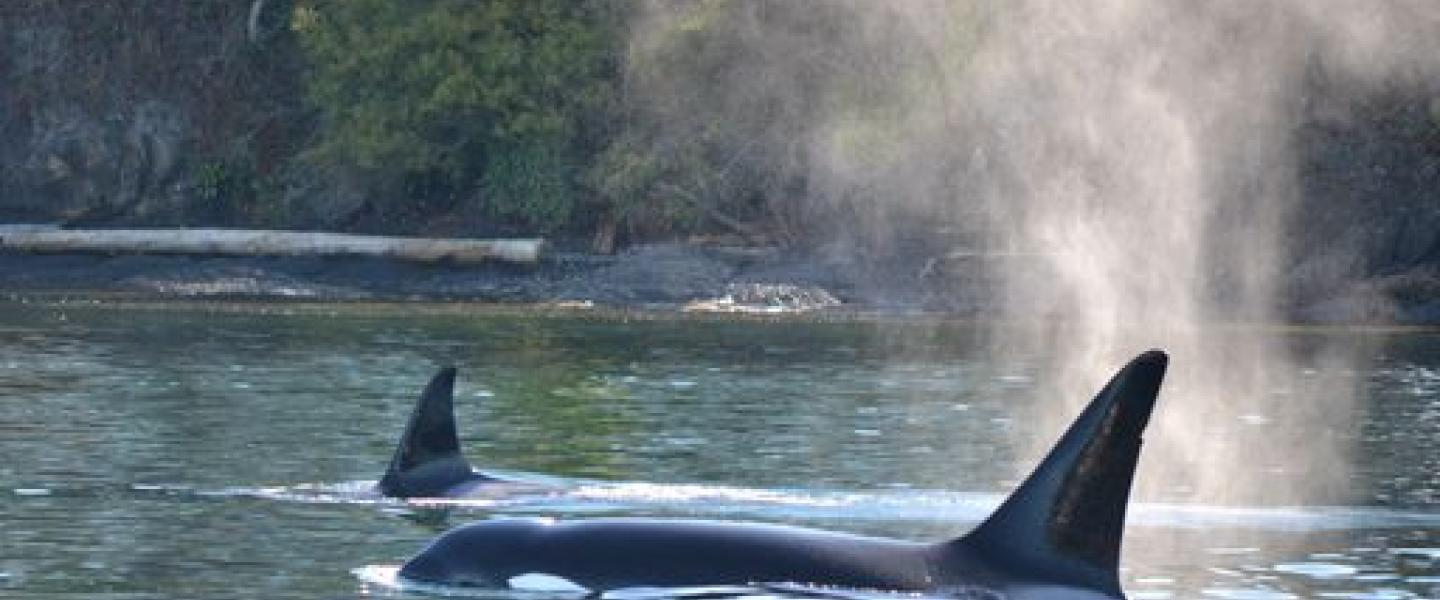
Olivia | M/V Osprey | June 10th, 2021 | 12:30pm
The day shifted from a cloudy, rainy morning into a beautiful sunny afternoon- just in time for our adventure trip on the zodiac. After getting everyone geared up in their exposure suits and a brief tutorial on spotting wildlife, we were off the dock and in search mode heading north! It was a quick trip up to speed, because we were fortunate enough to have reports of Bigg’s Killer Whales IN San Juan Channel when we left the dock. Since every day vessels depart in search of whales, it is more common to be transiting around for a while before coming across whales or reports. This means, having known whales so close to home was a real treat!
At a half mile out, we slowed down our vessel to under 7kts and slowly approached where we saw black dorsal fins rising from about the water. This family of Bigg’s Killer Whales is my personal favorite family, the T123’s- with a large male named Stanley that conveniently steals all of our hearts. We were able to get great views of this family as they mingled together traveling north near Waldron Island. After spending 45 minutes talking about orcas, their family dynamics, physiology, conservation status, and much more, we peeled off in search of more whales and wildlife potentially in the area.
This new search brought us near Turn Point Lighthouse, up close and personal in the sandstone honeycombing of the western side of Stuart Island, dipping into Haro Strait, and eventually turning into Spieden Channel. At Spieden Island we saw tons of migratory birds, mouflon sheep right above the water’s edge, snoozing Harbor Seals, and soaring Bald Eagles- even a huge Bald Eagle’s nest!
It is a great reminder of how our actions impact these ocean species and the entire Salish Sea ecosystem. Being able to listen to Bigg’s Killer Whales breath, watch a once critically endangered eagle happily soar scouting for food, and smell the stinky pinnipeds roll around on shore, is a connect we love to be a part of and share with whomever visits this special archipelago we call home.